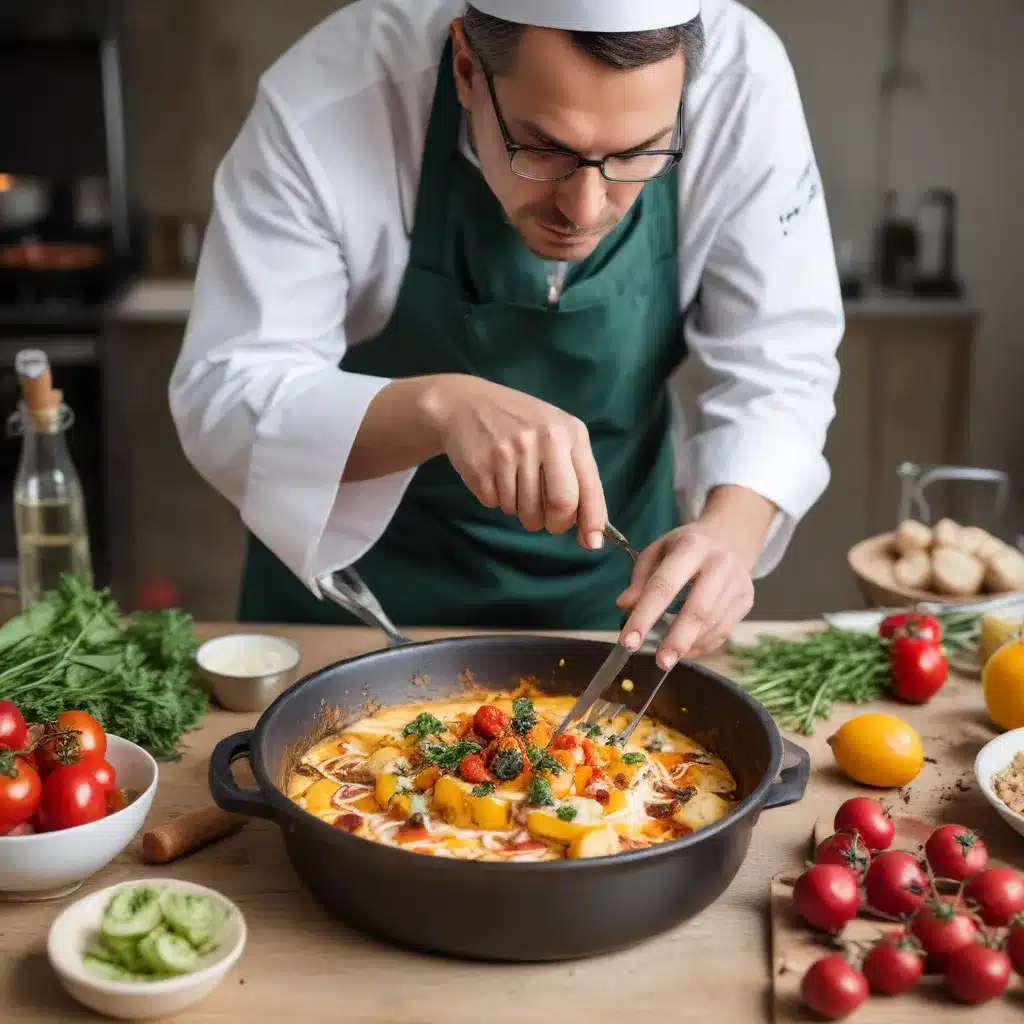
Unlocking the Science Behind Everyday Cooking Techniques
As a seasoned culinary professional, I’ve always been fascinated by the intricate chemistry that lies at the heart of the cooking process. From the sizzle of a seared steak to the rise of a perfect soufflé, there’s a remarkable interplay of scientific principles unfolding in our kitchens every time we prepare a meal. In this comprehensive guide, we’ll delve into the Culinary Chemistry that governs the transformations that occur when we cook.
The Importance of Understanding Cooking Science
Understanding the science behind cooking isn’t just for culinary nerds – it can actually make you a better, more confident cook. By learning the fundamental principles at work, you’ll gain the ability to troubleshoot problems, experiment with new techniques, and ultimately, create more consistent, flavorful dishes.
As Sibel Ozilgen notes in her book Cooking as a Chemical Reaction, “Cooking is not just an art, it is also a science.” By harnessing this scientific knowledge, you can elevate your cooking from merely following recipes to truly mastering the craft.
The Four Pillars of Culinary Chemistry
The transformations that occur during the cooking process can be understood through four key pillars of culinary chemistry:
- Water and Heat
- Proteins and Amino Acids
- Carbohydrates and Sugars
- Fats and Lipids
Each of these components plays a critical role in how ingredients behave and how flavors develop during cooking. Let’s explore them in more detail:
1. Water and Heat
Water is the foundation of most cooking methods, from boiling and steaming to baking and roasting. As The Curious Cook explains, “Water is the primary medium through which heat is transferred in cooking.”
When water is heated, it undergoes a phase change, transitioning from a liquid to a gas (steam). This transformation has profound effects on the texture and doneness of our ingredients. For example, the amount of water present in a piece of meat determines how quickly it will cook and how tender the final result will be.
Understanding the role of water and heat also helps explain phenomena like the Maillard reaction, which is responsible for the rich, caramelized flavors that develop on the surface of seared meats and baked goods.
2. Proteins and Amino Acids
Proteins are the building blocks of many of the foods we eat, from meat and eggs to legumes and grains. During cooking, these complex molecules undergo a series of changes that dramatically impact texture, appearance, and flavor.
As proteins are heated, their delicate molecular structures begin to unfold and rearrange, a process known as denaturation. This unfolding exposes the amino acids within the proteins, allowing them to interact and form new compounds that contribute to aroma, taste, and even color.
Mastering techniques like poaching, braising, and grilling can help you leverage the unique properties of proteins to achieve your desired culinary outcomes.
3. Carbohydrates and Sugars
Carbohydrates, including starches and sugars, are another essential component in the culinary chemistry equation. These molecules undergo a variety of transformations when exposed to heat and moisture, resulting in changes to texture, sweetness, and even color.
For instance, the caramelization of sugars – the browning reaction that occurs when they are heated – is responsible for the deep, complex flavors in many baked goods and roasted vegetables. Understanding the behavior of carbohydrates can also help you achieve the perfect texture in dishes like breads, pasta, and sauces.
4. Fats and Lipids
Fats and lipids play a crucial role in both the sensory and functional aspects of cooking. These molecules contribute to mouthfeel, flavor development, and even the way ingredients interact with one another.
When fats are heated, they can undergo a process called thermal oxidation, which results in the creation of new flavor compounds. Additionally, the way fats interact with other ingredients, such as proteins and carbohydrates, can significantly impact the overall texture and appearance of a dish.
Mastering techniques like sautéing, frying, and emulsifying can help you harness the power of fats to enhance your culinary creations.
Applying Culinary Chemistry in the Kitchen
Now that we’ve explored the fundamental pillars of culinary chemistry, let’s dive into how you can apply this knowledge in your own kitchen to become a more skilled and confident cook.
One of the most practical ways to leverage culinary chemistry is by understanding the various cooking methods and how they interact with the key components of food. For example, dry-heat cooking techniques like grilling or roasting are well-suited for bringing out the Maillard reaction and caramelization in proteins and carbohydrates, while moist-heat methods like braising or poaching are more effective for retaining moisture and tenderness.
Similarly, understanding the properties of different kitchen tools can help you make more informed decisions about which equipment to use for specific tasks. For instance, a sharp, high-carbon steel knife is better suited for precise slicing and dicing than a serrated blade, which is more effective for tearing through tough fibrous ingredients.
By incorporating this scientific knowledge into your cooking repertoire, you’ll be able to troubleshoot issues more effectively, experiment with new techniques, and ultimately, elevate the quality and consistency of your culinary creations.
Conclusion: Embracing the Science of Cooking
In the world of culinary arts, understanding the underlying science is not just a nice-to-have – it’s a necessity for any aspiring cook or chef. By delving into the Culinary Chemistry that governs the transformations that occur during the cooking process, you’ll unlock a deeper appreciation for the craft and the ability to create truly exceptional dishes.
So, the next time you step into the kitchen, remember the four pillars of culinary chemistry: water and heat, proteins and amino acids, carbohydrates and sugars, and fats and lipids. Embrace the science, and let it guide you on your journey to becoming a true Kitchen Warrior.


